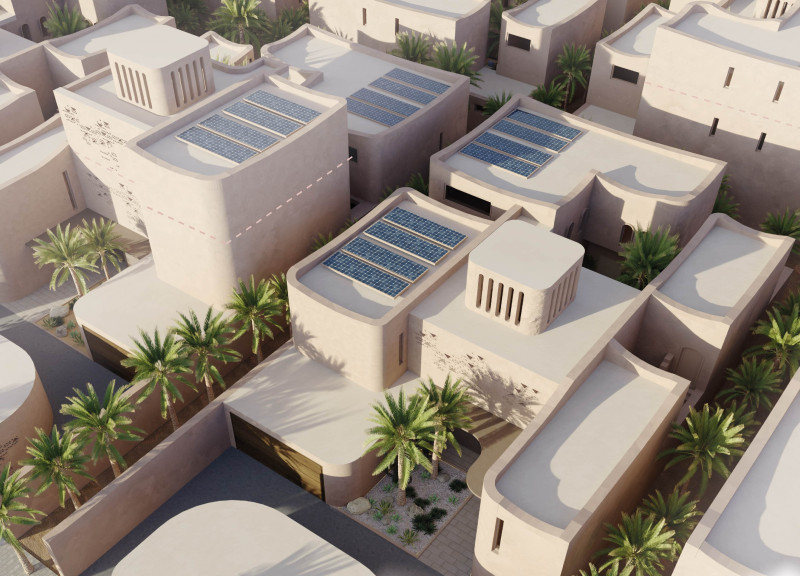5 key facts about this project
At its core, the project represents a harmonious blend of form and function. It is designed to accommodate a range of activities, from communal gatherings to individual workspaces, showcasing a flexible interior layout that prioritizes user experience. Large, open areas facilitate interaction and collaboration, while more intimate spaces offer privacy and retreat. This balance between communal and individual needs positions the project as a key asset in fostering community connections.
The architectural elements of the design are meticulously crafted, showcasing a rich array of materials and details that provide both aesthetic appeal and practical benefits. The facade, composed of textured concrete and warm timber accents, creates a welcoming presence that articulates a dialogue with the local environment. Expansive glass windows are strategically placed to optimize natural light while also enhancing the visual connection between the interior spaces and the exterior landscape. This use of glass not only contributes to energy efficiency but also encourages a sense of openness and transparency.
Significant attention has been given to the landscaping, which forms a vital component of the overall design. Native plantings and green spaces are thoughtfully incorporated to promote biodiversity and create serene outdoor areas for relaxation and recreation. The integration of nature not only enhances the aesthetic quality of the project but also addresses environmental concerns, aligning with broader goals of sustainability.
Unique design approaches are evident in various aspects of the project. The use of prefabricated construction methods streamlines the building process, reducing waste and minimizing on-site construction time. Innovative energy strategies, such as solar panels and passive cooling techniques, are embedded into the design, advocating for reduced energy consumption and promoting environmental responsibility. These strategies position the project firmly within contemporary architectural practices focused on sustainability and resilience.
The interior design complements the architectural intent, with carefully selected finishes and furnishings that echo the project’s overarching themes. A neutral color palette is employed throughout, creating a calming atmosphere that allows for flexibility in use. Additionally, bespoke furniture pieces are integrated to enhance functionality, allowing spaces to adapt to various events and gatherings.
As a result, this architectural design not only stands as a visual landmark in its urban context but also functions as a catalyst for community engagement and interaction. The project reflects a sophisticated understanding of contemporary architectural practices, merging sustainability with user-centered design. It serves as a resource for exploration and dialogue, inviting the community to engage with its spaces and activities.
For those interested in delving deeper into the details of this architectural project, exploring the architectural plans, architectural sections, and architectural ideas will provide further insights into the design's nuances and thoughtful execution. This project stands as a testament to the power of architecture in shaping lived experiences and enhancing community well-being, encouraging a closer examination of its myriad elements and outcomes.


























